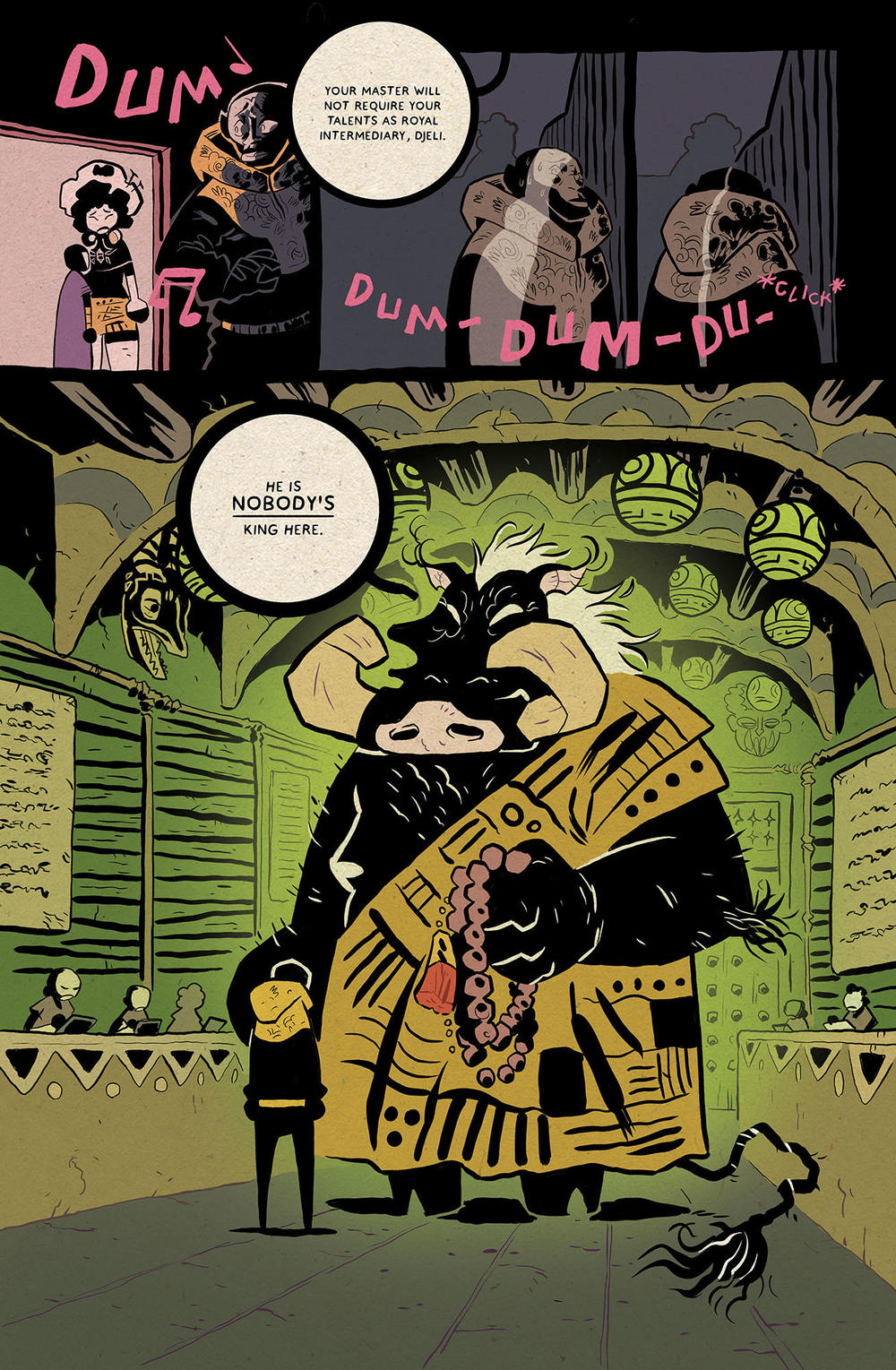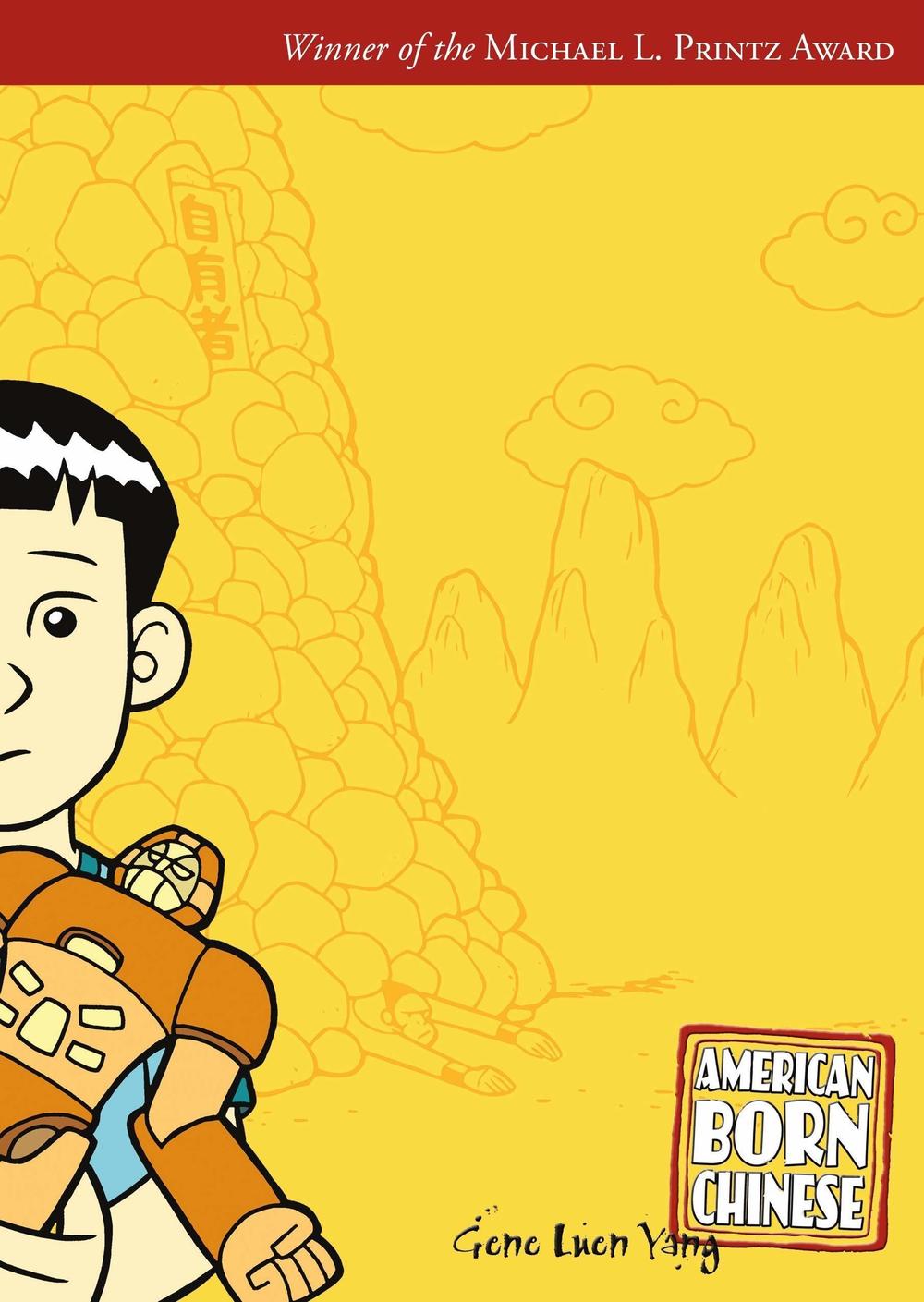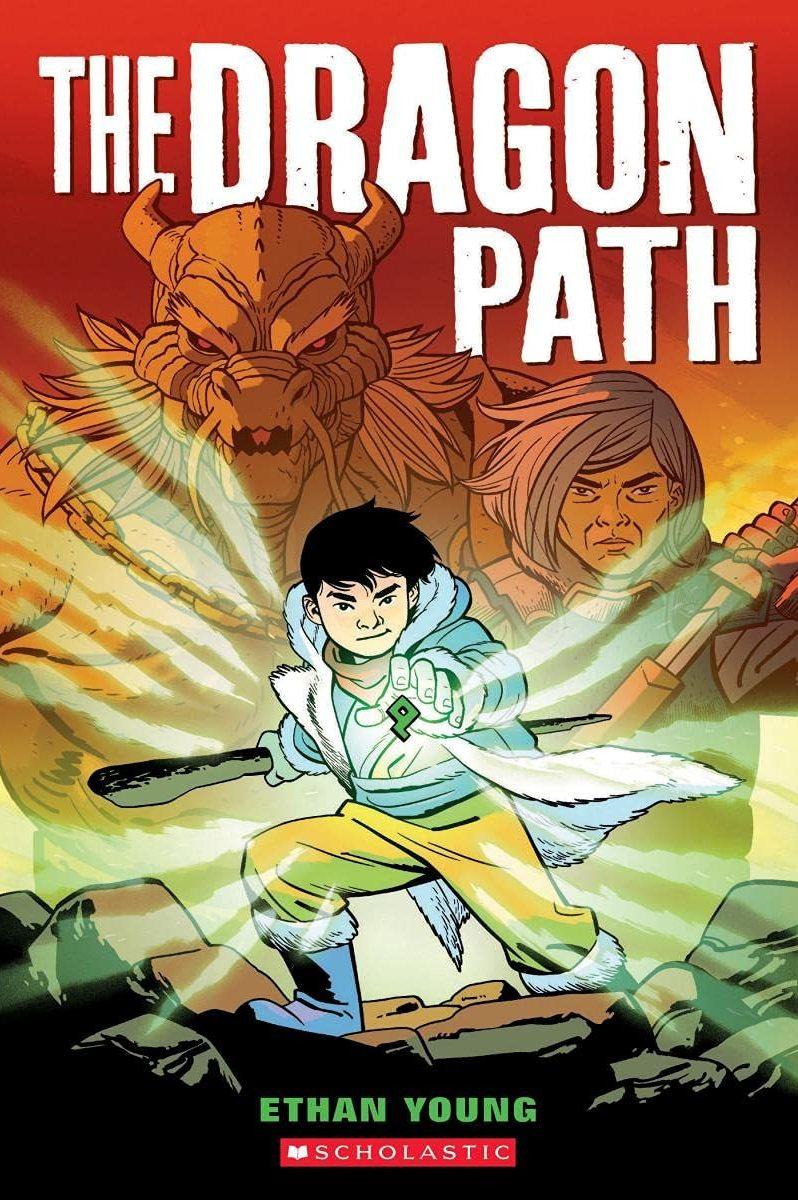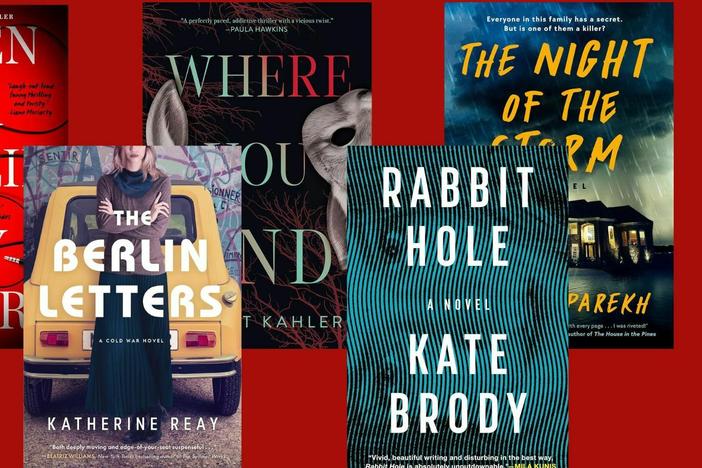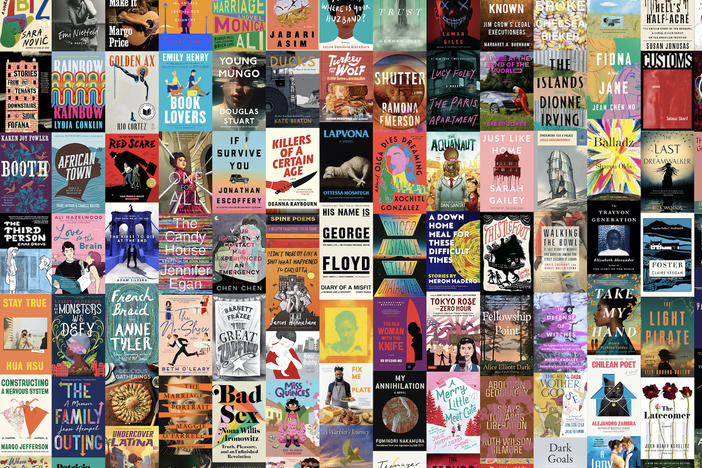Section Branding
Header Content
For These Comic Artists, Heritage And Folklore Are Superpowers
Primary Content
The night spot is called Temple Discotheque, and it's located in a distant future, sometime after a wizard caused the apocalypse with the push of a button.
In the club, past the packed house dancing to a DJ's beats, we find the last prince of the family who ruled the world before the wizard broke it, and beside that last prince is his djeli, a traditional West African storyteller, musician, and wise advisor all in one. This particular djeli, however, is hip and futuristic, sporting giant headphones. Suddenly, a door opens — and behind it is a giant boar, standing upright like a human. The boar tells our heroes there are no kings now, and money rules this broken world.
That's how cartoonist Juni Ba opens his new graphic novel, Djeliya, a story of that last prince fighting to fix the world. The book has won widespread acclaim from critics for its striking artwork and unique set of inspirations – and that's because Djeliya (pronounced ja-LEE-ah) melds the folklore and culture Ba grew up with in Senegal into something wholly new, something between sci-fi and fantasy, all brought to life by a range of aesthetic influences from traditional Senegalese art to late 90s manga to Cartoon Network animation.
A new wave of comics creators
Djeliya is a very cool book, a burst of color and magic, themed around the aftermath of colonialism, a book without an easy comparison. It's also a book you likely would not have seen 20 years ago, maybe not even 10. In fact, you almost didn't see it now (Ba — who lives in France — shopped it for years there without a sale, before reluctantly pitching to a publisher in Los Angeles). But Djeliya is part of a growing wave of new graphic novels, drawing inspiration from family histories and turning folklore into a superpower.
For many years, the traditionally white comics industry has not widely published stories by creators of color rooted in their own experiences or histories. When that first changed, publishers often just wanted realistic stories grounded in the creator's identity. But these new books draw from family lore and deep mythologies to make graphic novels with fantastical genre touches.
"The book just ended up being about things that I care about," Ba says, and that meant West Africa — its art, culture, history, and traditions — because that's where Ba grew up and where he returns each year to visit.
Perhaps no creator's career better reflects this shift than Gene Luen Yang, whose breakout graphic novel, 2006's American Born Chinese, mixed Chinese folklore with a story of first-generation immigrants in Northern California, where Yang himself grew up. This year, Yang created a new DC Comics character rooted in similar folklore — the Monkey Prince, a sneaker-clad homage to a character in the classic Chinese story, Journey to the West. Rival publisher Marvel has introduced similarly-inspired characters.
More access for more comic artists
Part of what has driven this change at the top has been the expanding audience for comics — and also the fact that creators are finding new ways to publish, from webcomics to crowdfunding platforms like Kickstarter, says Dr. Sheena Howard. She's a professor of communications at Rider University who studies race and identity in comics.
"There's more access to diversity in comics insofar as being able to get your work out there in publishing," Howard says, "and because of that, we're getting all types of people who have all types of ethnic and cultural backgrounds telling the stories that they grew up with."
For decades, most widely-published comics were vetted by editors at large companies. Creators now, however, can build their own audiences while delivering stories on their own terms. Of late, the choice for all publishers — even Marvel and DC Comics — Howard says, is "get on board or miss out on that audience and be left behind."
Howard also noted that younger cartoonists can now look to successful creators like Yang and others. "There are people you can email, and say, 'I want to do what you did,'" Howard says.
Interpreting folklore in a way that's meaningful today
With all this in mind, there's also a growing list of creators who are part of this trend, making graphic novels inspired by folklore, culture and family histories.
Robin Ha, author of last year's Almost American Girl: An Illustrated Memoir, is following that up with a new book inspired by folklore from her childhood in Korea — the story of Gumiho. Most East Asian countries have their own versions, but generally, the character is a mysterious fox woman, often beautiful, who gains her powers from sucking on human souls, not unlike a succubus. Gumiho might lure a lone traveler to a comfy home with food and drinks — and then kill them.
Ha says it was important to her to interpret a character who has existed for thousands of years in a way that feels meaningful to her personally today. "There are many different versions of [Gumiho] in many different cultures, but I wanted to have my own version of her," Ha says. "I wanted to bring my perspective as a modern Korean-American woman on this character."
Ethan Young's book, The Dragon Path, was published this year by Scholastic, and while it's often compared to Avatar: The Last Airbender, Young says many of the elements in the book were drawn from his own Chinese-American identity and upbringing in New York.
In the book, characters are returning to a family homeland where they themselves have never been, not unlike Young's own relationship with China. Young, who has drawn comics since 2005, has followed the shift of the industry, moving from memoirs to fantastical books like his latest, which is still rooted in the same bedrock inspirations.
"Whether it's editors or publishers or especially audiences, they crave authenticity," Young says, "and they also want to hear from people with their lived experiences."
Iron Man isn't going anywhere — there's room for everyone
The list of comics like these is long and getting longer, be it These Savage Shores, a vampire comic about colonialism in India in the 1700s, or Helm Greycastle, which combines traditional fantasy tropes with Aztec mythology.
Lee Francis IV is the owner of Red Planet, a comic book store in Albuquerque, N.M. Red Planet advertises itself as specializing in material "by, for, and about native folks," or as Francis calls his target audience, "indigi-nerds."
Francis, who also publishes comics by indigenous creators, recalls similar interest in these stories in the past, albeit fleetingly.
"I grew up in native literature and we've hit these boom and bust cycles," Francis says. "My hope for the industry is that this continues. There's room enough for everybody's stories. Just because I produce a native superhero, doesn't mean Iron Man disappears."
Zack Quaintance is a journalist, author, and comic book creator. Find him on Twitter at @ZackQuaintance.
Copyright 2021 NPR. To see more, visit https://www.npr.org.
Bottom Content

